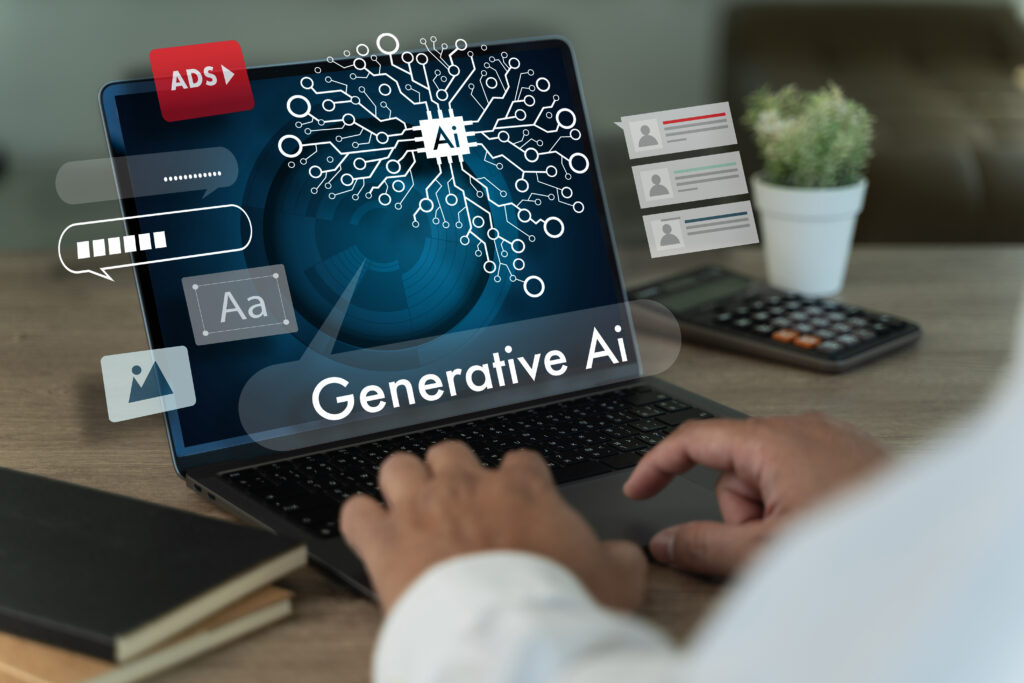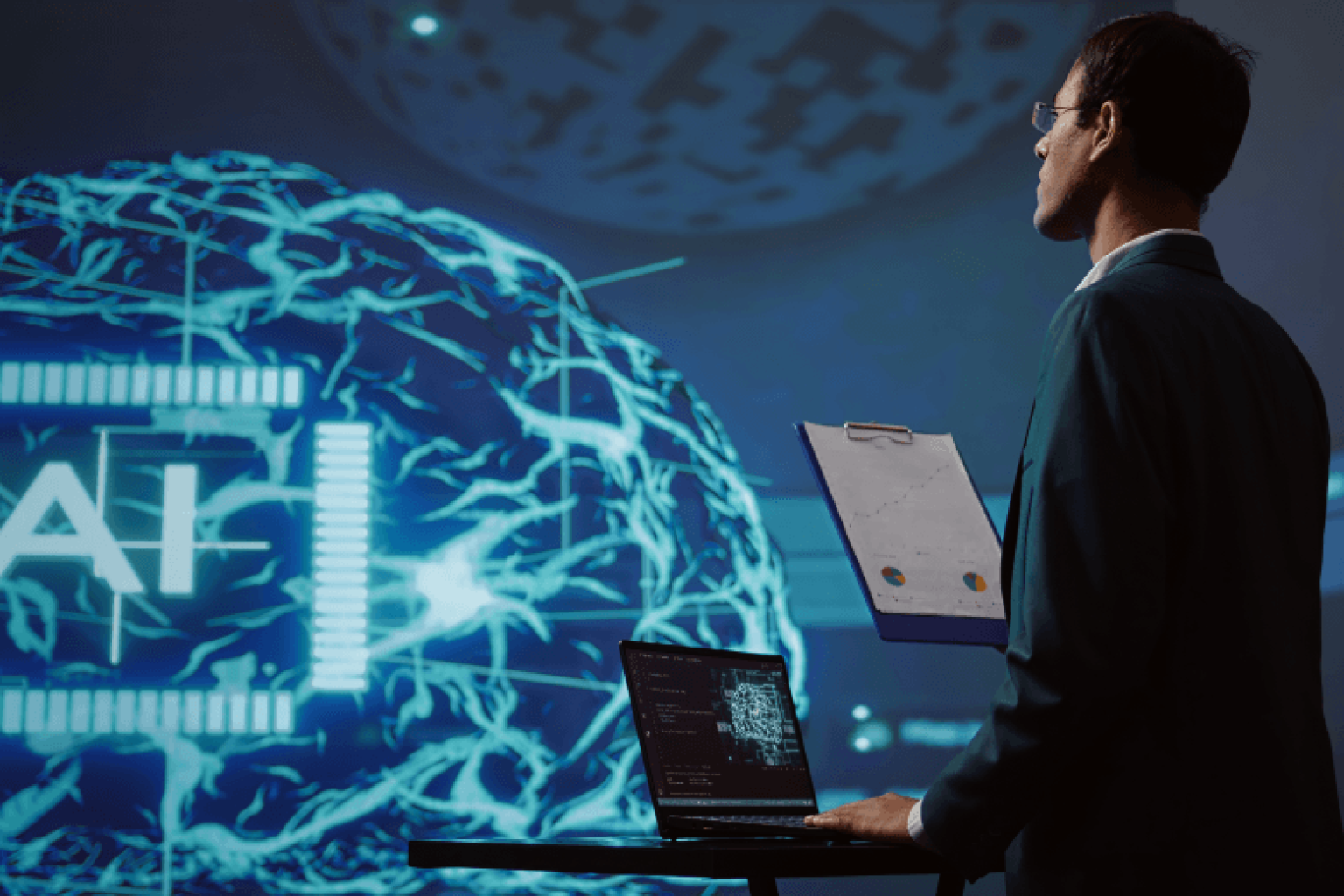AI has become an integral part of our daily lives. From searching for answers on Google, getting personalized product recommendations on Amazon, and even discovering new music on Spotify, AI is the magic behind the scenes! It’s amazing how AI has revolutionized how we live, work, and make decisions. And it’s not just about our personal lives–-Generative AI has also transformed the world of enterprise IT, changing how organizations operate, make decisions, and approach technology.
The latest generation of Generative AI tools has taken things to a new level! Not only can we use them to create incredible things, but we can also build our AI-powered apps and tools from scratch. (Yes, it’s a futuristic era.) Generative AI is breaking down the technical barriers that were once limited to AI development, and now it is becoming more accessible to everyone, regardless of their technical background.

Generative AI is like the creative head that produces content in various forms, including text, voice, visuals, and synthetic data. It utilizes deep learning models and large datasets to generate original material.
Gartner estimates that more than 10% of all data will be AI-generated by as early as 2025, heralding a new age, the “Age of With.”
Generative AI can imitate human creativity by producing new data that resembles what it has learned, it can design intricate graphics compose music and do impossible tasks within no time! AI-enhanced productivity is unlocking unprecedented levels of creativity and efficiency across various sectors.
According to Deloitte, “Various analysts estimate the market for Generative AI at a whopping $200B by 2032”
The Major Impact on Enterprise IT
The impact of Generative AI on the enterprise IT space is nothing short of remarkable! Companies are now empowered to create AI-powered applications (that can deliver tasks), simplify their workflows, and uncover fresh solutions to complex problems. IT teams are getting major perks like code generation, which is faster and more accurate, automated system maintenance (that’s a breeze), and predictive analytics which are very insightful! It also provides Faster development cycles at a lower operational costs and better service delivery all around. (It’s a win-win for businesses and their customers alike)!
With Generative AI-driven customer experiences, companies can craft personalized experiences that feel tailor-made for everyone and even stay ahead of the curve by anticipating market trends. As more and more enterprises welcome Generative AI tools into their IT infrastructures, they’re setting themselves up for success – gaining a competitive edge, driving innovation, and navigating the complexities of the digital age easily and confidently.
The Evolution of Generative AI
The breakthrough in Generative AI came with the advent of Generative Adversarial Networks (GANs), launched by Ian Goodfellow and his colleagues in 2014. GANs consist of two neural networks, the generator and the discriminator, which compete against each other to produce increasingly realistic outputs. This process led to significant improvements in the quality of generated images, videos, and audio, pushing the boundaries of what generative AI could achieve.
One of the biggest examples would be Open AI chat GPT-4 leveraging transformers and massive datasets to generate human-like text that is contextually relevant and coherent. These advancements have opened new possibilities for applications in various domains, including content generation, natural language understanding, and creative endeavors. As research and development continue, generative AI technologies are poised to further reshape enterprise IT, driving innovation and efficiency across industries.
Benefits of Generative AI in Enterprise IT
1. Automation of Complex and Repetitive Tasks
No one likes to do mundane tasks, and automation with Generative AI is indeed a blessing, for example, it can automate tasks such as sending emails, copying documents, and more bazillion things, freeing up time for more strategic and creative work. It can also automate mundane activities such as data entry, customer support, and report generation, allowing human employees to focus on more strategic initiatives. This leads to improved overall productivity and job satisfaction.
2. Personalized Customer Experiences at Scale
Generative AI can be like a trusted companion or guide. It offers a human-like conversational experience that provides a more personalized and engaging interaction. It enables personalized customer experiences through advanced algorithms that analyze vast amounts of data to generate customized recommendations and solutions tailored to individual preferences. This approach improves customer satisfaction, drives higher engagement and loyalty, and contributes to business growth.

3. Fostering Innovation and Creativity
Generative AI provides creative solutions and ideas that may not have been conceivable through traditional methods. In sectors like product design, marketing, and content creation, AI-generated outputs inspire new concepts and streamline the development process, accelerating the time-to-market for new products and services. It can quickly generate multiple design options, allowing designers to focus on refining and selecting the best concepts.
4. Cost Reduction and Efficiency
Generative AI reduces costs associated with IT infrastructure and human resources by optimizing operations and reducing the need for extensive manual intervention. This leads to cost-efficient AI solutions that contribute to higher profitability.
5. Driving Transformation and Competitive Differentiation
As Generative AI continues to evolve, it’s becoming a total game-changer in the enterprise IT landscape! Organizations can drive real transformation and stand out from the crowd in their industries. By leveraging the benefits of Generative AI, businesses can supercharge their agility and responsiveness to market demands, allowing them to quickly adapt to changing customer needs and stay ahead of the competition.
Conclusion
One of the most compelling benefits of Generative AI is its ability to make advanced analytics and insights accessible to everyone, regardless of technical expertise. By automating data processing and interpretation, AI empowers non-technical personnel to make informed, data-driven decisions, creating a more agile and responsive business environment.
Generative AI applications are breaking new ground in solving complex problems and creating novel instances from existing data. By leveraging the capabilities of unsupervised machine learning, deep learning, and artificial neural networks (ANNs), we can develop classifying models that learn representations and generate entirely new material.
According to Infosys Knowledge Institute, “Firms that use AI well can increase enterprise profit by 38% and will help deliver $14 trillion of gross added value to corporations by 2035.”



